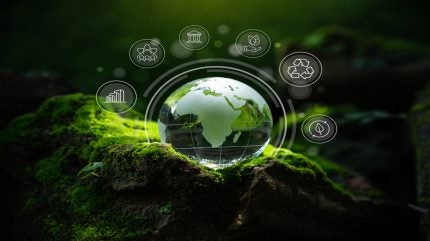
The latest research from the World Resources Institute (WRI) underscores the economic prudence of enhancing funding for climate adaptation and resilience.
The comprehensive study examined 320 investments across 12 countries, revealing that every dollar invested in these areas could yield more than ten dollars in benefits within a decade.

Discover B2B Marketing That Performs
Combine business intelligence and editorial excellence to reach engaged professionals across 36 leading media platforms.
The analysis, which encompassed projects totalling $133bn, indicated potential returns exceeding $1.4trn, with an average return rate of 27%.
Investments in a handful of sectors such as health could realise returns surpassing 78%, attributed to the significant benefits of safeguarding lives against climate-induced health threats.
Similarly, disaster risk management initiatives such as early warning systems demonstrated high returns by protecting lives and infrastructure.
Adaptation investments including climate-smart agriculture and urban flood protection often lead to development and social benefits that match or surpass the avoided climate impact losses.

US Tariffs are shifting - will you react or anticipate?
Don’t let policy changes catch you off guard. Stay proactive with real-time data and expert analysis.
By GlobalDataThe WRI’s evaluation considered the “triple dividend of resilience”: avoided losses, economic gains and social/environmental benefits.
Despite these advantages, only 8% of investment appraisals fully quantify these dividends, hinting at a gross underestimation of actual returns.
Beyond mitigating climate hazards, more than half of the benefits from adaptation investments manifest even without climate disasters. Infrastructure improvements, for instance, provide value beyond their intended purpose.
For example, irrigation systems support various crops and evacuation centres can serve as community spaces. Nature-based solutions often yield additional ecological and recreational advantages.
These findings suggest that adaptation investments align with broader development goals and sustainable development objectives. Moreover, nearly half of the investments studied also contribute to greenhouse gas emission reductions, indicating a synergy between adaptation and mitigation efforts.
WRI senior fellow Carter Brandon said: “One of our most striking findings is that adaptation projects aren’t just paying off when disasters happen – they generate value every day through more jobs, better health and stronger local economies.
“That is a major mind shift: policymakers don’t need a disaster to justify resilience – it is simply smart development.”
In light of these insights, the WRI advocates for governments to view adaptation as an economic opportunity and embed resilience into national development strategies.
The institute also calls for standardised measurement and reporting of adaptation outcomes to enhance investment transparency and accountability.
This study builds on the 2019 Adapt Now report by the WRI and the Global Commission on Adaptation, and responds to the G20 and Brazil’s call for evidence of the economic benefits of resilience investments.
COP30 Climate High-Level champion Dan Ioschpe said: “This evidence gives leaders and non-State actors exactly what they need heading into COP30: a clear economic case for scaling adaptation.”





